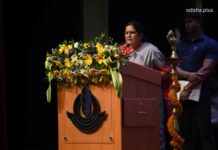In the backdrop of two books that have been awarded the International Booker Prize, namely Heart Lamp by Banu Mushtaq and Tomb of Sand by Geetanjali Sree, which are being translated into Odia and published by Dhauli Books
Bhaskar Parichha

Translations from a diverse range of Indian languages can greatly enhance your linguistic skills in multiple ways. They provide access to new vocabulary, phrases, and expressions, helping to fill in gaps for concepts or ideas that may lack direct equivalents in your native language.
For instance, when translating technical or scientific documents from languages like Hindi or Tamil into a regional language such as Kannada, it can lead to the creation of new terms and expressions that enrich the language.
What’s more, translating works of literature, folklore, or poetry from languages like Bengali, Malayalam, or Punjabi introduces a variety of cultural viewpoints, which can deepen the emotional depth and broaden the perspectives of speakers in your language. Additionally, being exposed to different sentence structures, idioms, and grammatical subtleties from other Indian languages can spark creativity and inspire new ways of expression, making your language more dynamic and versatile.
Translating ancient or lesser-known texts from languages such as Sanskrit, Pali, or Odia into contemporary Indian languages is vital for the preservation of cultural heritage. This translation process significantly enhances accessibility, allowing a broader audience to engage with these important works.
Likewise, it reignites interest in the historical foundations of one’s own language, fostering a deeper appreciation for its evolution. By connecting the past with the present, these translations play an essential role in sustaining the rich traditions and philosophies that define our cultural identity, ensuring they are passed down to future generations.
Translations are essential in promoting understanding between various linguistic communities, as they help dismantle language barriers and encourage a feeling of togetherness. By facilitating communication, translations allow people from different backgrounds to engage with one another and exchange ideas, which significantly enhances cultural interactions and enriches the tapestry of global diversity.
Integrating elements from various Indian languages not only broadens the adaptability and richness of your language but also cultivates a stronger bond with the vast linguistic variety that India presents.
(The author is a senior journalist and columnist. Views expressed are personal.)


























In a multilingual society like India it’s imperative to translate the works of one language to the other. Sahitya Akademi and National Book Trust as well as the universities can play a key role in this regard. The decision of the Odisha government to establish a Translation Akademi is commendable in this context.